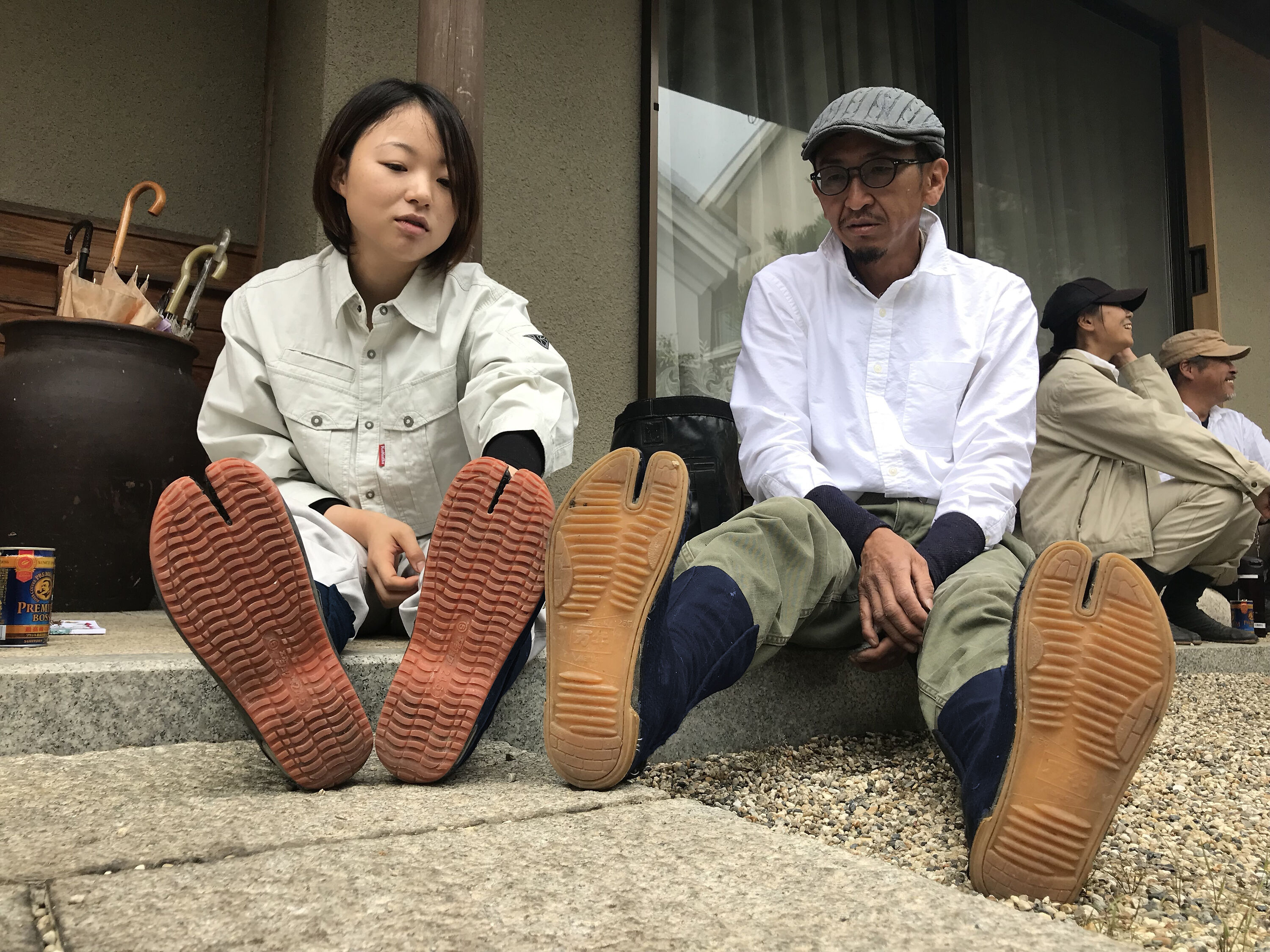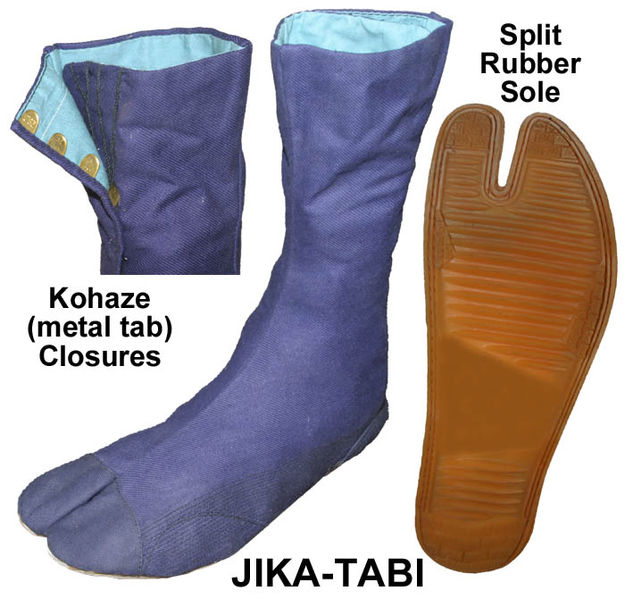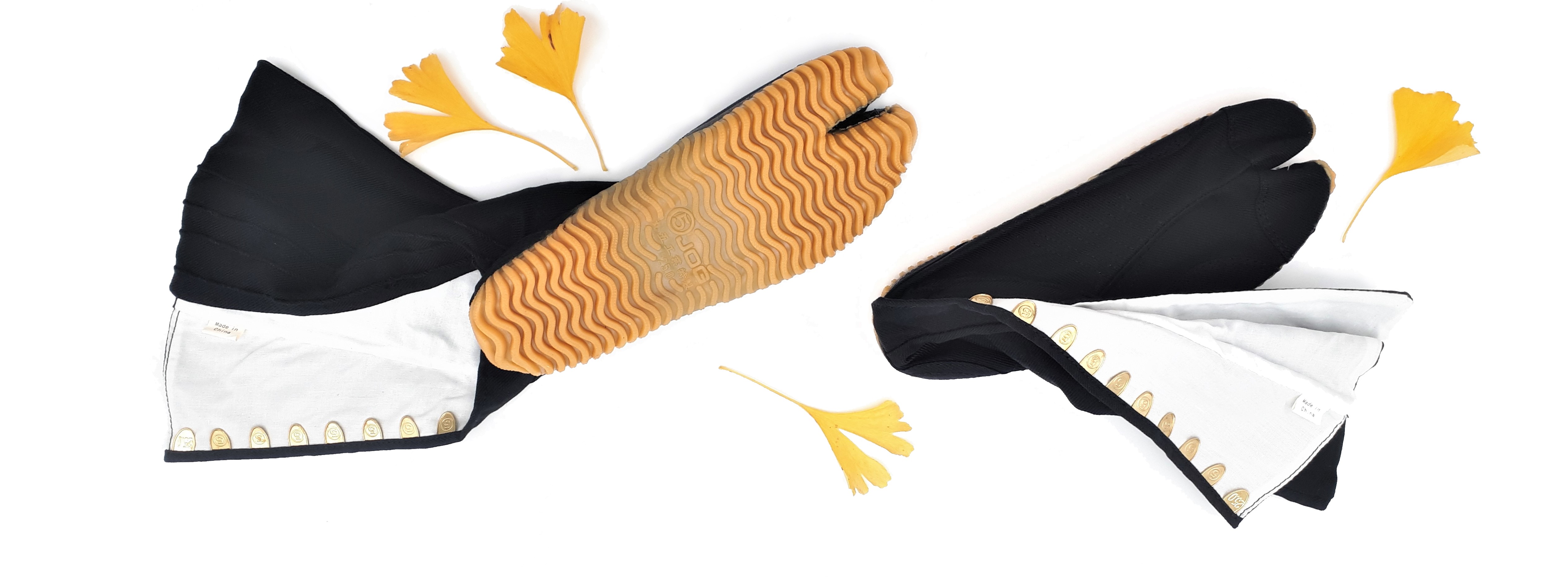"Jika tabi leaks" refers to a specific type of footgear worn in Japan, characterized by their split-toe design and traditionally crafted from leather or rubber.
Tabi are known for their durability, comfort, and traditional significance, and have been worn for centuries by various segments of Japanese society, including farmers, craftsmen, and travelers. They are often paired with sandals or geta, wooden clogs, to provide additional support and protection.Historically, tabi have held cultural importance in Japan, associated with traditional practices such as tea ceremony and martial arts. Their unique split-toe design allows for greater flexibility and dexterity, making them suitable for activities that require precise footwork.
In recent years, tabi have gained popularity beyond Japan, gaining recognition for their comfort and unique style. They are often incorporated into contemporary fashion, fused with modern materials and designs to create a fusion of traditional and modern aesthetics.
Jika Tabi Leaks
Jika tabi leaks refer to a particular type of footwear worn in Japan, characterized by their split-toe design and traditionally crafted from leather or rubber. Here are eight key aspects to explore:
- History: Originating in 15th century Japan, jika tabi have a rich cultural heritage.
- Design: Unique split-toe design allows for flexibility and dexterity.
- Materials: Traditionally made from leather or rubber, now incorporate modern materials.
- Craftsmanship: Often handmade by skilled artisans, ensuring quality and durability. li>
These aspects collectively highlight the importance of jika tabi leaks in Japanese culture, their unique design and craftsmanship, and their evolving role in fashion. They represent a fusion of tradition and modernity, offering both practical and cultural value.
History
The historical significance of jika tabi is deeply intertwined with their cultural heritage. Originating in 15th century Japan, they have been worn by various segments of society, including farmers, craftsmen, and travelers. This rich history has shaped the design, craftsmanship, and symbolism associated with jika tabi.
- Cultural Symbolism: Jika tabi have become symbolic of traditional Japanese culture, representing centuries of craftsmanship and heritage.
- Traditional Practices: They are closely associated with traditional practices such as tea ceremony and martial arts, where their unique design allows for precise footwork and agility.
- Social Significance: Historically, different styles and materials of jika tabi denoted the wearer's social status and occupation.
- Durability and Comfort: The traditional construction methods and materials used in jika tabi ensure durability and comfort, making them suitable for everyday wear and various activities.
Understanding the historical context of jika tabi helps appreciate their cultural significance and the reasons behind their enduring popularity. The rich heritage associated with these unique shoes adds depth and meaning to their contemporary use in fashion and cultural practices.
Design
The unique split-toe design of jika tabi is a defining characteristic that sets them apart from other footwear. This design element not only contributes to their distinctive appearance but also offers practical advantages, enhancing both flexibility and dexterity.
The split-toe allows the toes to move independently, providing greater freedom of movement. This is particularly beneficial for activities that require precise footwork and agility, such as martial arts, traditional dance, or even everyday tasks like walking on uneven terrain. The flexibility of the tabi allows the feet to adapt to different surfaces and movements, ensuring comfort and stability.
Furthermore, the split-toe design enhances dexterity, allowing for greater control and precision in movements. This is especially important in activities like rock climbing or playing traditional Japanese instruments, where precise foot placement and toe articulation are crucial. The tabi's design allows the wearer to maintain a strong grip and execute delicate movements with ease.
In conclusion, the unique split-toe design of jika tabi is a key component that contributes to their functionality and practicality. It provides flexibility, dexterity, and control, making them suitable for various activities and adding to their overall appeal.
Materials
The materials used in jika tabi have evolved over time, adapting to changing needs and preferences while preserving the shoe's essential characteristics. Traditionally, jika tabi were crafted from leather or rubber, materials prized for their durability and water resistance. These materials ensured that the tabi could withstand the rigors of everyday wear and the demands of various activities.
In contemporary times, jika tabi have incorporated modern materials, expanding their versatility and appeal. Synthetic materials, such as nylon and polyester, offer advantages like breathability, moisture-wicking properties, and enhanced durability. These advancements have made jika tabi more suitable for a wider range of activities, from outdoor pursuits to everyday wear.
The choice of materials in jika tabi has a direct impact on their functionality and aesthetics. Traditional materials like leather provide a classic look and a timeless appeal, while modern materials offer performance-enhancing qualities. The incorporation of modern materials has allowed jika tabi to adapt to contemporary lifestyles and fashion trends, without compromising their cultural significance.
Understanding the connection between materials and jika tabi leaks is essential for appreciating the evolution of this footwear. The use of traditional and modern materials has shaped the functionality, durability, and style of jika tabi, making them a versatile and enduring part of Japanese culture.
Craftsmanship
The craftsmanship involved in jika tabi leaks is a crucial aspect that contributes to their quality and durability. Skilled artisans employ traditional techniques and meticulous attention to detail to create each pair of tabi, ensuring they meet the highest standards.
The use of premium materials, such as high-quality leather or durable rubber, combined with expert craftsmanship, results in tabi that are built to last. The intricate stitching and reinforced construction ensure that the tabi can withstand the demands of everyday wear and various activities, providing long-lasting comfort and support.
Moreover, the handmade nature of jika tabi allows for customization and personalization. Artisans can tailor the tabi to the wearer's specific needs and preferences, ensuring a perfect fit and optimal comfort. This level of craftsmanship elevates jika tabi from mere footwear to works of art, imbued with the skill and dedication of their creators.
Appreciating the craftsmanship of jika tabi is essential for understanding their value and significance. The meticulous attention to detail and the use of high-quality materials ensure that jika tabi are not only durable and long-lasting but also represent the epitome of traditional Japanese craftsmanship.
Traditions
Jika tabi leaks are deeply intertwined with Japanese cultural traditions, particularly tea ceremony and martial arts. Their unique design and functionality make them an essential part of these practices, contributing to the overall aesthetic and ritualistic experience.
- Tea Ceremony: In the refined world of Japanese tea ceremony, jika tabi leaks are worn to maintain cleanliness and prevent damage to tatami mats. Their split-toe design allows for precise and graceful movements, adding to the overall elegance of the ceremony.
- Martial Arts: Jika tabi leaks are widely used in various martial arts disciplines, including karate, judo, and aikido. Their flexible and durable construction provides stability and support during intense movements, enhancing the practitioner's performance and reducing the risk of injury.
- Cultural Symbolism: Beyond their practical uses, jika tabi leaks have become symbols of traditional Japanese culture. They represent centuries of craftsmanship, discipline, and the pursuit of perfection. Wearing jika tabi leaks in traditional settings conveys respect for Japanese heritage and a deep connection to cultural roots.
- Cross-Cultural Influence: The unique design and functionality of jika tabi leaks have gained international recognition. They have been adopted by practitioners of martial arts and cultural enthusiasts worldwide, contributing to the global appreciation of Japanese traditions.
In conclusion, the association of jika tabi leaks with traditional Japanese practices like tea ceremony and martial arts highlights their cultural significance and the deep connection between footwear and cultural identity. They are not merely footwear but symbols of tradition, discipline, and the enduring spirit of Japanese heritage.
Fashion
In contemporary fashion, jika tabi leaks have gained significant popularity, captivating the imaginations of fashion enthusiasts worldwide. This convergence of traditional Japanese footwear with modern aesthetics has created a unique and captivating fusion.
- East Meets West: Jika tabi leaks have become a symbol of cross-cultural exchange, seamlessly blending Eastern and Western fashion sensibilities. Designers have incorporated the split-toe design into contemporary streetwear, high fashion, and even haute couture, creating a fusion that celebrates diversity and cultural appreciation.
- Modernized Tradition: While preserving their traditional form, jika tabi leaks have been reimagined using innovative materials and techniques. Designers experiment with different fabrics, textures, and colors, pushing the boundaries of traditional craftsmanship while maintaining the essence of the original design.
- Streetwear Culture: Jika tabi leaks have become a staple in streetwear culture, embraced by fashion-forward individuals and celebrities alike. Their unique silhouette and versatility make them a perfect complement to urban and edgy outfits, adding a touch of Japanese heritage to contemporary street style.
- Unisex Appeal: Unlike traditional Japanese footwear often associated with specific genders, jika tabi leaks have transcended gender boundaries. They are worn by both men and women, appealing to a wider audience and breaking down fashion norms.
The integration of jika tabi leaks into contemporary fashion reflects a growing appreciation for cultural diversity and a desire for unique and expressive forms of self-expression. This fusion of tradition and modernity has propelled jika tabi leaks to the forefront of fashion, where they continue to inspire and captivate.
Cultural Significance
Jika tabi leaks hold immense cultural significance, deeply intertwined with Japanese identity and heritage. They represent centuries of tradition, craftsmanship, and cultural practices.
- Symbol of Tradition: Jika tabi leaks embody the rich heritage of Japanese craftsmanship. Their unique design, materials, and construction techniques have been passed down through generations, preserving traditional skills and aesthetics.
- Cultural Identity: Wearing jika tabi leaks is a way of expressing cultural identity and connection to Japanese heritage. They are often worn during traditional ceremonies, festivals, and cultural events, representing pride and respect for Japanese traditions.
- Historical Significance: Jika tabi leaks have played a significant role in Japanese history. They have been worn by various societal groups, from farmers and craftsmen to samurai warriors, each with their own distinct style and purpose.
- Artistic Expression: Jika tabi leaks are also considered a form of artistic expression. Their unique shape and design have inspired artists, designers, and fashion enthusiasts, leading to contemporary interpretations and adaptations of this traditional footwear.
In conclusion, the cultural significance of jika tabi leaks is multifaceted, representing tradition, cultural identity, historical importance, and artistic inspiration. They are a tangible embodiment of Japanese heritage and continue to captivate hearts and minds both within Japan and beyond its borders.
FAQs on Jika Tabi Leaks
This section addresses frequently asked questions and provides concise answers to clarify common concerns and misconceptions surrounding jika tabi leaks.
Question 1: What is the cultural significance of jika tabi leaks?
Answer: Jika tabi leaks hold deep cultural significance in Japan, embodying traditional craftsmanship, cultural identity, historical importance, and artistic inspiration.
Question 2: Are jika tabi leaks only worn for traditional purposes?
Answer: While jika tabi leaks have strong ties to Japanese traditions, they have also gained popularity in contemporary fashion, blending traditional and modern aesthetics.
Question 3: What materials are traditionally used to make jika tabi leaks?
Answer: Traditionally, jika tabi leaks were crafted from leather or rubber, prized for their durability and water resistance.
Question 4: How do jika tabi leaks enhance foot movement?
Answer: The unique split-toe design of jika tabi leaks allows for greater flexibility and dexterity, providing enhanced control and precision in movements.
Question 5: Are jika tabi leaks suitable for everyday wear?
Answer: Modern jika tabi leaks incorporate materials like nylon and polyester, making them more breathable, moisture-wicking, and suitable for a wider range of activities, including everyday wear.
Question 6: Where can I find authentic jika tabi leaks?
Answer: Authentic jika tabi leaks can be found at traditional Japanese footwear stores, specialty retailers, and online marketplaces that specialize in Japanese products.
In conclusion, jika tabi leaks offer a unique blend of tradition and modernity, with cultural significance, functional benefits, and contemporary appeal. They continue to captivate and inspire, bridging the gap between heritage and innovation.
Proceed to the next section to explore additional insights on jika tabi leaks.
Tips for Enhancing Your Jika Tabi Experience
Jika tabi leaks, with their unique design and cultural significance, offer a distinct footwear experience. Here are some tips to optimize your use and appreciation of jika tabi leaks:
Tip 1: Choose the Right MaterialConsider the intended use and personal preferences when selecting the material for your jika tabi leaks. Traditional materials like leather provide durability, while modern materials like nylon offer breathability and moisture-wicking properties.Tip 2: Ensure a Snug Fit
Jika tabi leaks should fit snugly to provide support and prevent blisters. Look for tabi with adjustable straps or laces to customize the fit. Properly fitted tabi will enhance comfort and performance.Tip 3: Break Them In Gradually
New jika tabi leaks may feel stiff initially. Wear them for short periods and gradually increase the duration to allow your feet to adjust to the unique split-toe design.Tip 4: Keep Them Clean
Regular cleaning will maintain the quality and longevity of your jika tabi leaks. Use a soft brush or cloth to remove dirt and debris. For deeper cleaning, hand-wash them with mild soap and water.Tip 5: Store Them Properly
Store your jika tabi leaks in a cool, dry place away from direct sunlight. Insert shoe trees or stuff them with paper to maintain their shape when not in use.Tip 6: Respect the Cultural Significance
If wearing jika tabi leaks for traditional purposes, be mindful of the cultural significance and etiquette associated with them. Follow proper wearing and removal procedures to show respect for Japanese customs.Key Takeaways:
- Prioritize comfort and functionality by selecting the appropriate material and fit.
- Break in your jika tabi leaks gradually to avoid discomfort.
- Maintain their quality through regular cleaning and proper storage.
- Honor the cultural traditions associated with jika tabi leaks, particularly in formal settings.
By following these tips, you can fully appreciate the unique qualities and cultural significance of jika tabi leaks while ensuring their longevity and comfort.
"Jika Tabi Leaks"
Our exploration of "jika tabi leaks" has unveiled their multifaceted nature, encompassing historical significance, cultural symbolism, and contemporary relevance. From their humble origins in 15th century Japan to their current status as fashion icons, jika tabi leaks embody the enduring spirit of Japanese craftsmanship and cultural identity.
The unique split-toe design provides unparalleled flexibility and dexterity, making them ideal for traditional practices like tea ceremony and martial arts. Their intricate construction techniques, often involving skilled artisans, ensure durability and comfort, while the use of premium materials adds to their aesthetic appeal. In recent times, jika tabi leaks have transcended cultural boundaries, gaining popularity in contemporary fashion as a fusion of tradition and modernity.
As we delve deeper into the significance of jika tabi leaks, we recognize their ability to bridge the gap between heritage and innovation. They serve as a reminder of the rich cultural traditions of Japan while embracing modern sensibilities. Whether worn for traditional purposes or as a stylish statement, jika tabi leaks continue to captivate and inspire.
Unveiling The Age Of Tia Kemp: Discoveries And Insights
Unveiling Montana Fouts' Towering Height: Secrets To Softball Dominance
Steven He's Net Worth 2024: Unlocking Financial Insights

Tabi Exploring the Unique SplitToe Shoes of Japan and More! Sakuraco

Jika Tabi Garden Shoes Niwaki ubicaciondepersonas.cdmx.gob.mx

WWII Japanese 'otherworldly' jikatabi boots on display at Australian

The Popular Japanese Souvenirs Top 10 Japan Style

Obuv JikaTabi NIWA
ncG1vNJzZmimlazAqrqNm6Ooml6YvLOxjbCgp5yfrMBvusStZqyhl6KudnvJoqKaZaSWr6p5y56YpKtencGuuA%3D%3D